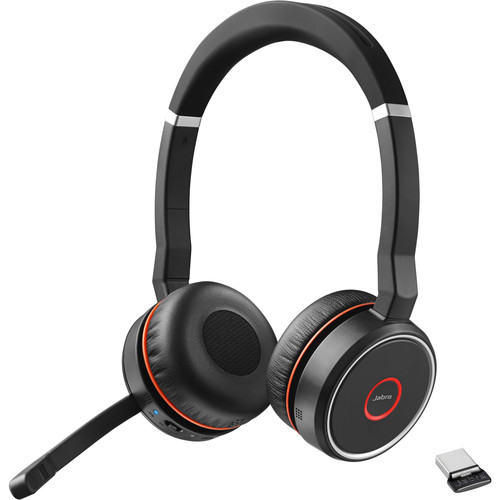Superior sound is a phrase touted without holding much weight throughout the telecommunications industry. Every single manufacturer claims it produces products with the best sound. That may be all right for the general public as a whole, but for the call center it can be the difference between making a daily profit.
More and more there is pressure put on call centers and their operators to provide seamless service to their customers. And operators rely on superior sound to deliver. To increase productivity call center operators need a phone headset with good sound quality to hear their customers clearly every single time. Customers find it frustrating to be continuously asked to repeat themselves. Good sound quality will ensure your operators make fewer mistakes.
No longer can you take a gamble on a manufacturer’s claim of superior quality. You need to check the claims manufacturer’s make about their products. It is possible to train yourself to listen for superior sound quality – know what you should listen for and understand what you are hearing.
Defining Superior Sound
Superior sound quality is measurable scientifically as a series of elements that mimic face-to-face conversations. The following are some things to help you understand what to listen for when selecting a headset for your business:
- Speech to Ambient Noise Ratio (SANR). This measures how much noise filters through the headset relative to the voice.
- Total Harmonic Distortion. This measures the difference between the sound output and input. Where there is no sound distortion in a system, pure tone coming into the headset is reproduced and transmitted to the caller at the same level. The operator only needs to adjust the volume.
- Initial Loudness. This is the measurement of whether the new signal is too high or low for the operator to hear clearly.
- Frequency Response and Bandwidth. This measures whether all high and low voice tones are captured and reproduced for best possible sound quality.
Orthotelephonic Frequency Response Curve. The orthotelephonic frequency response curve is the most common measurement engineers use to determine the frequency each headset needs to produce. The orthotelephonic response curve is based on someone talking 1 meter from the ear of the caller. Imagine a small microphone in the headset of the listener. Sounds are shaped by the listener’s ear canal and ear, as well as by the shape of the head – the orthotelephonic response curve measures how these sounds are shaped.
Other Frequency Response Curves. There are several ways to engineer new headsets. One is to design them to work on a particular frequency response curve that is preset to a user’s specifications. The other is to design a headset to frequency response curves controlled by the user. This introduces bass and treble controls each user can set to personal preferences. Many users tend to prefer using headsets that emphasize higher frequency sounds and suppresses the lower tones. This could be because most background interference comes in on the lower tones and the best sound quality comes through on the higher frequency level.
What should you Hear
The purpose of superior sound quality in a headset is to reproduce sound as if you were talking face-to-face with your caller. If this cannot be achieved with your choice of headset, it fails to meet the ‘simple-to-understand though difficult-to-achieve’ standard. The following are the five basic requirements to meet the face-to-face standard:
- High Speech-to-noise Ratio. There should be as little background noise as possible in comparison with a person’s voice.
- Absence of Artifacts. There should be no mechanical interference – pops, squeals or echoes – on the line. There should nothing to remind either party they are not talking face-to-face.
- Voice Expansion. When you stop speaking on the line background noise should be reduced.
- Protection from Loud Noises. Loud noises and static interference coming down a telephone line when using a headset is disruptive and unpleasant for the operator. Headsets that protect against this make for a better work environment for your staff.
- No Harmonic Distortion. The output and input signals should match each other without interference from external elements that alter the balance of the sound quality.
Why Superior Sound Matters
This is a serious matter, especially for the call centers that rely on good quality headsets for their staff. Call centers are an important part of all customer service strategies and they rely on superior headset quality to deliver.
Headsets without superior sound promote poor customer interaction between operators and their customers. This leads to data entry mistakes, poor service delivered when answering customer service calls. This can lead to an increase of incoming calls coming from unhappy customers. Your customers are busy and there is nothing more annoying than to have a product not work correctly in the first place, let alone making multiple calls to address the issue. This is a good way to lose your customers; and bad word of mouth is a sure way to lose money through your business.
All sorts of industry are scrutinizing call centers, such as the financial industry, as they realize this is where most of their customer interaction is. Call center headsets need to provide easy communications solutions between the operator and the customer. Lost calls should be almost never happen.
More and more the health industry is scrutinizing the efficiency of their call centers, especially since National Committee for Quality Assurance put pressure on them to service their customers better. Things like lost calls and call response waiting times for customers are among the things the health industry are scrutinizing.
Obviously sound clarity is the best friend of all businesses running call centers for their customers. And, the headset manufacturers that meet the face-to-face standard will always be a clear choice for call centers meeting tight bottom lines. Superior sound quality reduces the stress your operators work under. The upside of this is your customers receive a high standard of customer service and there are fewer costly mistakes. This produces confidence in you and your products within the marketplace.








